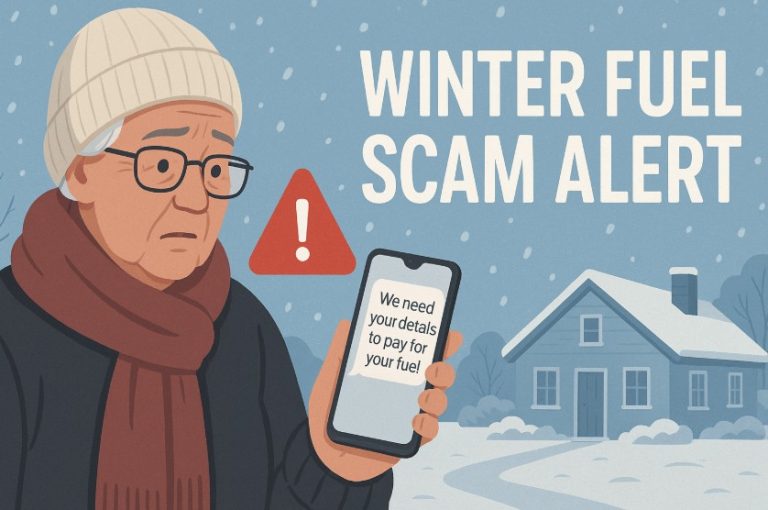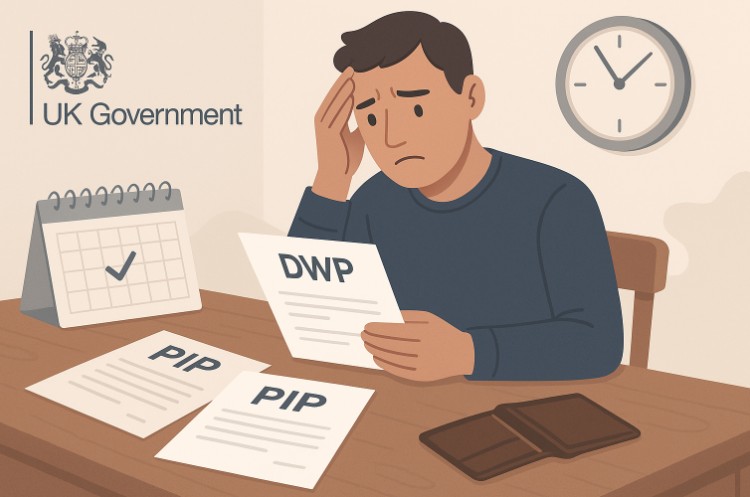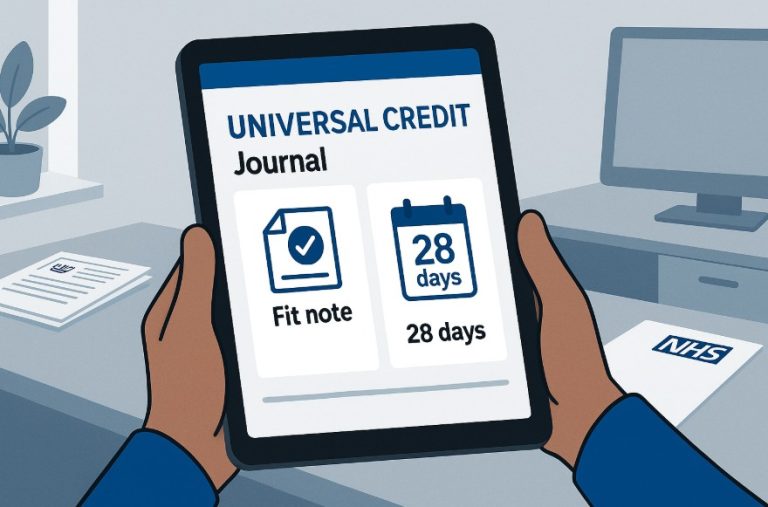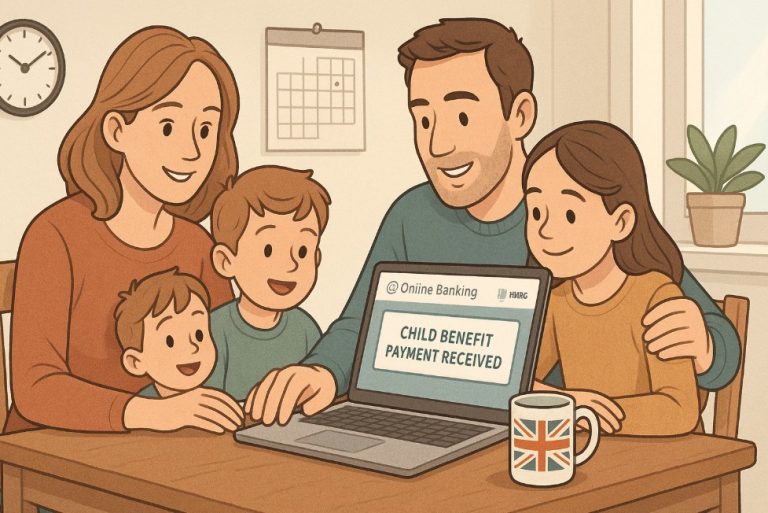When individuals in the UK receive payments from the government, it’s common for bank statements to show entries with codes and abbreviations that can be unclear at first glance.
One such entry is “DWP FP Funding”. For many, it may prompt questions regarding the nature of the payment, especially if it is unexpected.
This article provides a detailed explanation of what this transaction means, why it may appear on your statement, and what actions you should take if you’re uncertain about its origin.
What Does DWP FP Funding Mean On Your Bank Statement?
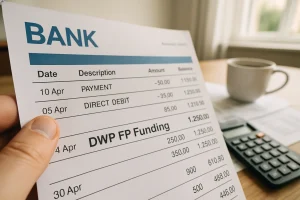
DWP FP Funding is a bank transaction label used when the Department for Work and Pensions (DWP) issues a payment through the UK’s Faster Payments system.
FP stands for Faster Payment, a method of transferring money quickly between UK banks, often within minutes.
This payment reference generally means that a government benefit or support-related sum has been sent to a recipient’s account using a faster, non-scheduled route.
Unlike traditional BACS transfers which take a few working days, Faster Payments allow for near-instant transactions.
These transactions typically show up when the DWP makes one-off payment, urgent, or corrected payments, rather than routine benefit disbursements.
Why Would The DWP Send A Faster Payment?
The Department for Work and Pensions may use the Faster Payments system for various reasons, especially when funds need to reach claimants quickly or when corrections are required.
Standard benefit payments, such as Universal Credit or Personal Independence Payment, are usually sent via BACS, but faster payments are reserved for exceptions.
Faster Payments may be used in the following situations:
- The original payment was delayed and needs to be expedited
- A manual correction or adjustment is made to a previous payment
- Discretionary payments, such as hardship support or budgeting advances, are issued
- An emergency payment is approved due to a claimant’s urgent need
This system allows DWP to process payments on the same day and often within a couple of hours.
Could DWP FP Funding Be A Backdated Or Corrected Payment?
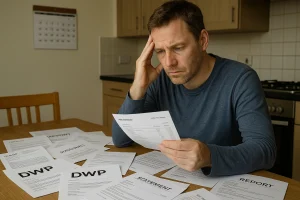
Yes, one of the most common reasons DWP FP Funding appears is because the department is correcting an earlier issue.
Sometimes this relates to benefit entitlement that was miscalculated or processed late. When adjustments are made, DWP issues a separate payment, often through Faster Payments.
Typical reasons for corrected payments include:
- Late submission of income or personal data affecting Universal Credit
- Appeal or reconsideration resulting in an increase in benefit
- Changes in circumstances, such as family size or disability status
- Missed or overlooked components of a benefit entitlement
These payments are issued individually and may not coincide with regular benefit payment dates.
Is The DWP FP Funding Linked To Any Special Schemes?
While DWP FP Funding is most often related to mainstream benefits, it can sometimes be associated with special schemes or temporary support programmes.
These schemes are often introduced in response to national economic pressures or local authority grants.
Examples of schemes that have used Faster Payments include:
- Cost of Living Payments (particularly in 2022 and 2023)
- Household Support Fund allocations by local councils
- Crisis loans and discretionary hardship payments
- Winter Fuel Payment top-ups
Claimants may receive such payments without advance notice, particularly in cases of crisis support. However, these payments usually follow an application or assessment.
How Can Someone Verify A DWP FP Funding Payment?
When a DWP FP Funding entry appears on a bank statement unexpectedly, claimants are advised to verify the origin and purpose of the payment.
There are several steps that can help clarify whether the payment is legitimate and intended for the account holder.
Verification can be done by:
- Logging into your Universal Credit account to check recent payments
- Reviewing letters or emails received from the DWP
- Matching the payment amount and date with your application or claim history
- Contacting the DWP directly via official numbers listed on GOV.UK
Banks can only confirm the transaction took place and the account it was deposited into. Only the DWP can verify what the payment was for.
What Should You Do If You’re Unsure About A DWP FP Payment?
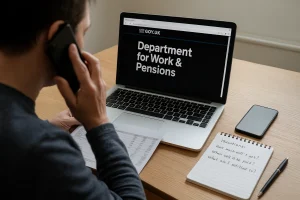
When an unexpected payment labelled as DWP FP Funding appears in your bank account, it is important not to make assumptions. Acting cautiously helps avoid problems such as having to return funds or dealing with possible overpayments.
Review The Payment Details Carefully
Start by reviewing your bank statement for any supporting details that may offer clues:
- Look at the exact payment amount
- Check the payment date and time
- Note any other reference codes attached
Compare these details with recent communications from the DWP, including texts, emails, letters, or journal entries (if you are on Universal Credit).
Log Into Relevant Benefit Portals
If you receive benefits through systems like Universal Credit, log into your account to view recent activity. These portals often show:
- Upcoming payments
- Adjustments or corrections
- Messages from DWP caseworkers
- Notes regarding backdated payments
This is one of the quickest ways to identify the reason behind a Faster Payment.
Contact The Department For Work And Pensions
If the payment does not match anything you’ve applied for or expected, contact the DWP directly. Use only official contact numbers listed on the GOV.UK website and be ready to provide:
- Your National Insurance number
- The exact amount and date of the payment
- Your full name and address
It may take some time for the DWP to investigate, but they will be able to confirm whether the payment is legitimate and whether any action is required.
Avoid Spending The Money Until Confirmed
Until you’ve verified the payment:
- Do not treat it as a windfall
- Avoid transferring or withdrawing it
- Don’t rely on it for bills or urgent expenses
Spending the money before confirming its legitimacy can lead to complications, particularly if the DWP later determines it was issued in error.
What Are The Most Common DWP Payment References Seen On Bank Statements?
The DWP uses a variety of abbreviations and reference codes when issuing payments. These codes help banks and claimants identify the type of benefit being received. However, they can often appear confusing without explanation.
Understanding The Reference Codes
Each benefit programme or payment type typically uses a unique code. Recognising these codes can save time when verifying or questioning unexpected deposits.
Below is an expanded table of the most frequently seen DWP payment references:
| Reference Code | Meaning | Associated Benefit |
| DWP FP Funding | Faster Payment issued by DWP | One-off, urgent, or corrected payments |
| DWP UC | Universal Credit | Monthly household benefit |
| DWP ESA | Employment and Support Allowance | Income for those unable to work due to illness |
| DWP JSA | Jobseeker’s Allowance | Financial support while looking for work |
| DWP CHB | Child Benefit | Weekly or monthly child support |
| DWP PIP | Personal Independence Payment | Support for individuals with disabilities |
| DWP ARRS | Arrears | Backdated payments for prior entitlements |
| DWP ADV | Advance Payment | Budgeting loans or Universal Credit advances |
| DWP CA | Carer’s Allowance | Payments to individuals providing care |
Differentiating Between Regular And One-Off Payments
Regular payments such as Universal Credit or PIP will appear on predictable dates with the same references. In contrast, unexpected or one-time payments often come with “FP” or “ARRS” in the reference and arrive outside the normal payment cycle.
Use this approach to assess your statement:
- Recurring codes usually indicate standard payments
- Codes with “FP” or “ARRS” often point to exceptions or corrections
- Mixed or changed references may indicate changes in your claim status
Seek Clarification When Codes Are Unfamiliar
If the reference code does not align with any benefit you are aware of, or if the amount looks unusual, it is important to contact the DWP for clarification.
Always compare the code with historical statements to understand if it’s part of a recurring pattern.
Understanding these references not only helps with tracking benefit payments but also prevents misinterpretation that could lead to financial errors or unnecessary stress.
Can DWP FP Funding Be Paid Into Joint Accounts Or Accounts In A Different Name?

DWP payments can be made into joint accounts, provided the account details match the ones supplied by the claimant during their application.
It is common for claimants to use shared or household accounts, especially for Universal Credit, which is often issued per household rather than individual.
Key considerations include:
- The name on the bank account must be provided to the DWP accurately
- If a joint account is used, both account holders should be aware of incoming benefits
- Payments sent to incorrect accounts due to errors can be delayed or returned
DWP will not usually issue a payment if they suspect the account details are mismatched, especially for benefits that require identity verification such as PIP or ESA.
How Long Does It Take For DWP Faster Payments To Reach Your Account?
Faster Payments are typically processed within minutes and rarely take more than two hours. Unlike BACS payments, which follow a fixed schedule, Faster Payments are intended for real-time or same-day transfers. However, several factors can affect the speed at which these payments arrive.
DWP Faster Payment Timeframes
| Payment Type | Estimated Time to Arrive | Possible Delays |
| Standard Faster Payment | Within 2 hours | Banking system checks |
| Evening or Weekend Payment | Next working day | Outside banking hours |
| Incorrect Bank Details | May fail or bounce back | Verification required |
| Public Holiday Transfers | Delayed to next business day | Bank closure |
If a payment labelled as DWP FP Funding does not arrive within 24 hours of being issued, it’s advisable to contact your bank first, followed by the DWP, to track the payment status.
Conclusion
DWP FP Funding on a bank statement indicates a Faster Payment from the Department for Work and Pensions.
It is typically a legitimate government disbursement used for urgent, corrected, or discretionary payments.
While it’s often a welcome surprise, claimants should verify the payment before using it, especially if it arrives unexpectedly. The GOV.UK website and DWP contact lines are the best sources for confirmation.
Understanding bank statement references and their meanings helps recipients remain informed and financially secure when receiving public support.
FAQs About DWP FP Funding
What does FP mean in DWP FP Funding?
FP stands for Faster Payment, a UK banking method for sending funds quickly. In this context, it means the DWP sent the funds via the Faster Payments system.
Is DWP FP Funding the same as Universal Credit?
Not necessarily. DWP FP Funding can include Universal Credit payments but may also cover other benefits or one-off payments unrelated to Universal Credit.
Can I get multiple DWP FP Funding payments?
Yes, you may receive multiple FP payments from the DWP, especially if there are separate adjustments or multiple benefits being processed.
Does DWP FP Funding mean I’ve been overpaid?
Not usually, but it’s worth checking. If the payment doesn’t align with your entitlement, it might be an overpayment that the DWP will later request back.
How do I know if a DWP FP Funding payment is for a benefit I applied for?
Review your recent applications or contact the DWP. They can confirm whether the payment matches a current or pending benefit claim.
Can my bank help identify a DWP FP payment?
Your bank can provide the transaction details, but only the DWP can confirm the reason behind the payment.
What should I do if I think a DWP FP payment is a mistake?
Do not spend it. Contact the DWP directly to confirm the payment. If it’s not meant for you, they will advise on how to return it.

